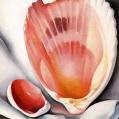Tuesday, September 16, 2008
Minstrels: Sing Your Way Home
We haven't found time to practice this in three lessons but some of you may want to learn it for a closing song. I have never found the notes or the guitar chords for it and I don't even remember where I learned it. However, its amazing what Google can find. Here is a midi version that is probably more musically correct than mine: try singing along until the tune is familiar to you. Also, there is a version on YouTube here but the words go by too fast unless you already know them. If anyone plays the guitar well enough by ear to share the chords with me, I would be delighted.
A Morning to Polish and Keep

Today's Read Aloud was this book by Julie Lawson. Check this link to read a review that may give you more ideas for lessons that connect to the story. I am now particularly interested in using this book as a cornerstone for an outdoor life and adventure theme. It was even more fun to share this book today because I had a wonderful fishing experience at Purden Lake on Sunday. Listening or "reading" a little deeper, what meaning did you find in the story to apply to Art or to Life?
"Ish" and the Optional Scribes and Minstrels Session


Minstrels: Today we reviewed the way to write and clap whole notes, half notes, quarter notes, and eighth notes. We listened to a song played on the recorder: Iroquois Lullaby, and we clapped its 4/4 time and talked about the Music element of "beat". The students also sang the song and clapped the time as I played the song on my recorder. The goal is that someday we will all play this song together. We reviewed how to hold the recorder and how the holes need to be fully covered with the fat parts of our fingers in order for the sound to be clear and not squeaky.
Scribes: We began drawing today with a sample exercise from Mona Brooks' book, Drawing with Children. I'm sharing the Amazon link with you, not because I want you to buy the book, but because you may want to scroll down and read some of the reviews. It is interesting to note that several adults who tried to use this book to teach their children to draw were amazed with the results for their own drawing. I also shared another excercise page of unidentifiable or "abstract" shapes that I developed with the drawing tools in the Word program. I can email this to everyone. I hope people will blog about the experience of using these exercises: there may be some frustration but also some surprises. How might you extend this exercise? Next, we did an exercise that I call "Mystery Drawing". Students fold a blank sheet of paper in four and the teacher puts two intersecting lines on the white board or chalkboard. Students then follow each mark that the teacher puts on the board, using the lines or the fold lines to guide them in the placement of the line on the page. Check out blogs to see what people experienced in this exercise, remembering that they didn't know that it would be a caricature or cartoon of a grumpy old man until the last few lines were in place. There were no "Show and Share" contributions yet today so I read aloud "Ish". Although we spent most of the half hour observing carefully, "ish" helps to teach that drawings need not be precise replicas of what we see. You might like to comment on the tension in that - How can we teach students to be observant and increase their technical skills in drawing and still have them value spontaneous, flowing lines and shapes that are "vase -ish" renditions of a vase, or "tree-ish" depictions of a tree?
Yes, REAL Men DO Blog!

Here's the evidence. This was posted on a blog by Mr. T., the local king of bloggers and master of blogging professional development for District 57 teachers. I await the URLs from our own masters of the blogging universe. As always, the key question is: How does something like this connect to Arts PLOs? Anyone want to make a case for morphing and other visual play as legitimate curriculum?
Thursday, September 11, 2008
I've Fixed the Comments...
Sorry. I wondered why there were no comments but the comment setting was for "only registered users". I didn't expect that to be the default. You should be able to leave comments now.
Not every elder will tell you the same story...
Wednesday, September 10, 2008
Exploring Creativity with YouTube
Today I have been trying to learn how to add a video bar to my blog. I need to move on to other things now and I have not been able to manage my settings to create a "gadget" to share the videos on creativity that I have selected. Maybe one of you can help me understand where to find the "channel" and "keywords" to do so. In the meantime, I'll include some clips that I found in this post. For some inspiring text and images on teaching creativity from a credible source, check out ASCD's The Whole Child. To challenge the way we as teachers think about children, see Child's Creativity and also a short and entertaining lecture by Sir Ken Robinson: Creativity in Education. For fun, check out a short piece simply called Creativity. (Be warned that this one has some vulgar content but I think is worth sharing with adult students for its overall message. Also note that the "toilet" images are a reference to artist Marcel Duschamps) Finally, for a relaxing display of a fascinating art form - sand painting - see Taking Creativity to a New Level - but you may want to turn off the sound; the music is cheesy. If you read this post and view any of the videos, please comment here. Blogging is about creativity in communication and it is stifled or "squelched" by lurking - looking without participating. To invite comment, I pose this question: What understanding, definition, or example of creativity occurs to you as a result of viewing any or all of these videos?
Tuesday, September 9, 2008
How to be an Artist...No, How to be Alive!
Stay loose. Learn to watch snails. Plant impossible gardens. Invite someone dangerous to tea. Make little signs that say "Yes!" and post them all over your house. Make friends with freedom and uncertainty. Look forward to dreams. Cry during movies. Swing as high as you can on a playground swing, by moonlight. Cultivate moods. Refuse to be "responsible". Do it for love. Take lots of naps. Give money away. Believe in magic. Laugh a lot. Celebrate every gorgeous moment. Have wild imaginings, transformative dreams, and perfect calm. Draw on the walls. Giggle with children. Listen to old people. Open up. Dive in. Be free. Bless yourself. Drive away fear. Play with everything. Entertain your inner child. Build a fort with blankets. Get wet. Hug trees. Write love letters.
Add your own...in the comments section! WB
Add your own...in the comments section! WB
Origami Lilies

This paper folding exercise is a challenge but the result is worth the effort and achievable for intermediate grades - an ideal challenge activity for peer coaching and community building over a period of a week or two. Paper instructions are difficult to follow if you have never seen one made. Follow this video on YouTube if you need to review the steps. The artist, Lisa Shea, has a website with wonderful photos, background information on origami, and a DVD of origami instructions for sale for a reasonable price. Looking at her website briefly, I think this person is an example of someone who has combined eclectic interests to develop her creative spirit and talents. In her case, her creativity has become profitable - she has found ways to make a living doing what she loves. For teachers, the ability to "wow" a child with a quickly-made origami flower gift may be profitable in its own way. I can think of many moments when such a skill might have been a pleasant diversion from tears or helped to build a stronger relationship with a hard-to-reach child.
Monday, September 8, 2008
Welcome to A Place Where Creativity Blooms!

Hello! You've found the right place, the place where I will share some of my thoughts on creativity and fine arts instruction across the elementary school curriculum. This is also a place where you can access links to blogs created by your classmates to document their development as a creative person and teacher. I hope that you will visit these blogs often to learn from and encourage each other.
Creativity is sometimes quirky...I wonder if I may be the only "simpsonized" professor on campus?
Subscribe to:
Comments (Atom)





